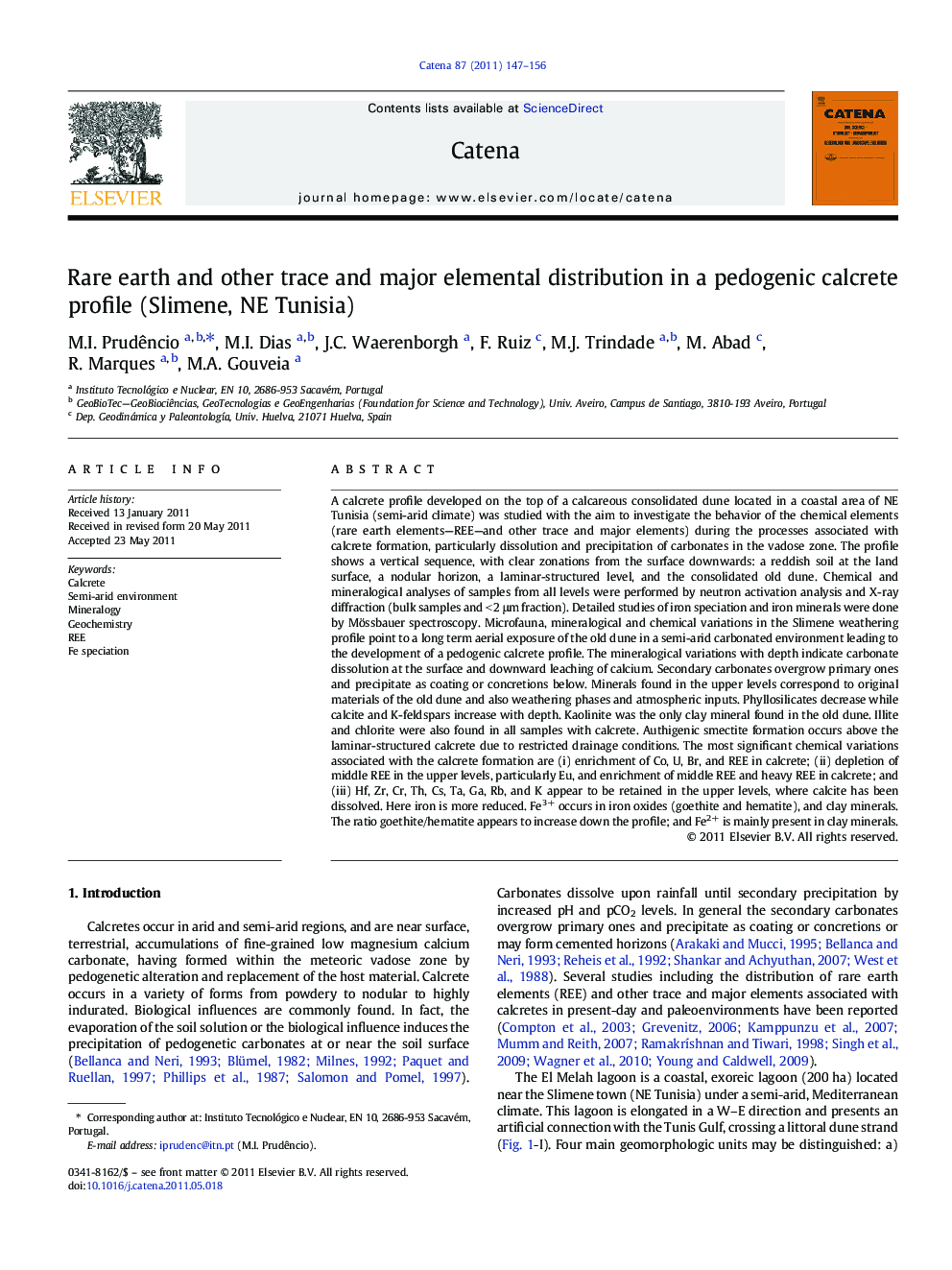| کد مقاله | کد نشریه | سال انتشار | مقاله انگلیسی | نسخه تمام متن |
|---|---|---|---|---|
| 4571987 | 1332140 | 2011 | 10 صفحه PDF | دانلود رایگان |

A calcrete profile developed on the top of a calcareous consolidated dune located in a coastal area of NE Tunisia (semi-arid climate) was studied with the aim to investigate the behavior of the chemical elements (rare earth elements—REE—and other trace and major elements) during the processes associated with calcrete formation, particularly dissolution and precipitation of carbonates in the vadose zone. The profile shows a vertical sequence, with clear zonations from the surface downwards: a reddish soil at the land surface, a nodular horizon, a laminar-structured level, and the consolidated old dune. Chemical and mineralogical analyses of samples from all levels were performed by neutron activation analysis and X-ray diffraction (bulk samples and < 2 μm fraction). Detailed studies of iron speciation and iron minerals were done by Mössbauer spectroscopy. Microfauna, mineralogical and chemical variations in the Slimene weathering profile point to a long term aerial exposure of the old dune in a semi-arid carbonated environment leading to the development of a pedogenic calcrete profile. The mineralogical variations with depth indicate carbonate dissolution at the surface and downward leaching of calcium. Secondary carbonates overgrow primary ones and precipitate as coating or concretions below. Minerals found in the upper levels correspond to original materials of the old dune and also weathering phases and atmospheric inputs. Phyllosilicates decrease while calcite and K-feldspars increase with depth. Kaolinite was the only clay mineral found in the old dune. Illite and chlorite were also found in all samples with calcrete. Authigenic smectite formation occurs above the laminar-structured calcrete due to restricted drainage conditions. The most significant chemical variations associated with the calcrete formation are (i) enrichment of Co, U, Br, and REE in calcrete; (ii) depletion of middle REE in the upper levels, particularly Eu, and enrichment of middle REE and heavy REE in calcrete; and (iii) Hf, Zr, Cr, Th, Cs, Ta, Ga, Rb, and K appear to be retained in the upper levels, where calcite has been dissolved. Here iron is more reduced. Fe3+ occurs in iron oxides (goethite and hematite), and clay minerals. The ratio goethite/hematite appears to increase down the profile; and Fe2+ is mainly present in clay minerals.
Research Highlights
► Dune aerial exposure in semi-arid carbonated environment leads to calcrete profile.
► Enrichment of Co, U, Br, and REE in calcrete.
► MREE depletion near surface, particularly Eu, MREE and HREE enrichment in calcrete.
► Hf, Zr, Cr, Th, Cs, Ta, Ga, Rb, K retained near surface where calcite was dissolved.
► Fe is more reduced at surface. The ratio goethite/hematite increases downwards.
Journal: CATENA - Volume 87, Issue 1, October 2011, Pages 147–156